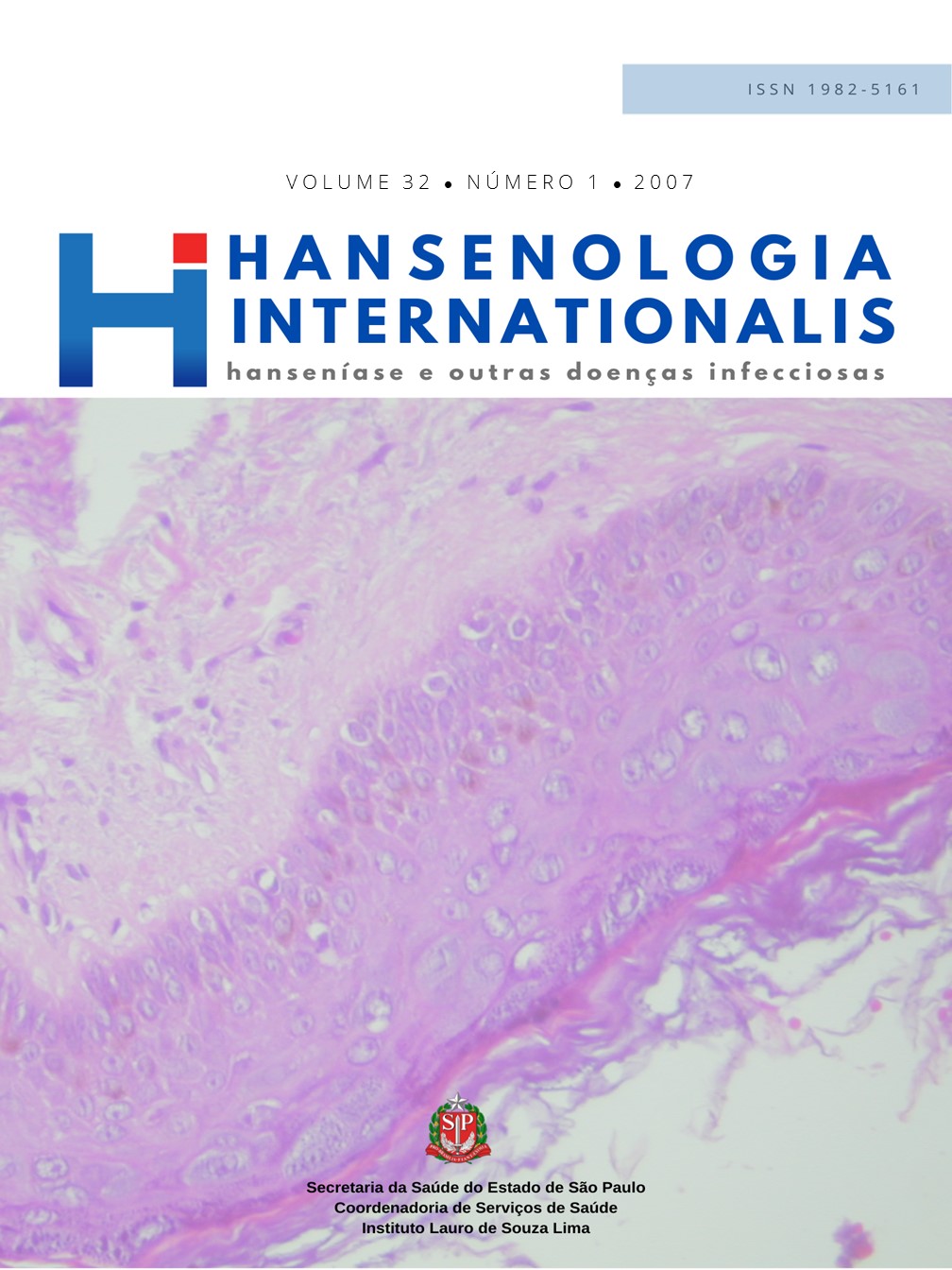Abstract
Hansen´s disease, a very ancient disease, was the reason for patients´ compulsory exclusion into the social environment. Nowadays its cure is possible; there is lack of information and the prejudice is still a serious problem. Some measures were taken in the attempt of reducing the stigma, as the Law nº 9 010/95, which made official the change in the use of the term leprosy for Hansen´s disease. This study aimed at investigating the changesaccording to the people’s point of view who have or had Hansen´s disease. A particular protocol with closed questions was applied to 50 people. The statistical analysis was descriptive, with simple percentile calculations and crossed-variables. The results showed that there was married prevalence (56%), retired (30%) and salary earners (20%); with incomplete elementary education (46%). From the 64% that knew other name for Hansen´s disease, 93.8% mentioned the term leprosy and 90% knew about the historical prejudice; 63% claimed that the change of the name might have reduced the prejudice and 76.7% thought the people knew that leprosy´s disease was the old leprosy, as so much that when talking about the disease, most of them (60%) immediately referred the term to the leprosy. Fear under several aspects reached 50% of the interviewees. We pointed out the lack of information in relation to the transmission forms, disabilities onsets and treatment. The historical past still has influence in spite of the change of the term; patients face prejudices in the social environment due to the association with leprosy term. The difficulty in understanding the concepts can be one of the causes of the stigma. We could point out that the change of the term was not able to eliminate prejudice.
References
2- Ministério da Saúde (BR). Hanseníase. Brasília (DF): Ministério da Saúde; 2006. disponível em: http://www.ministerio.saude.
bvs.br/html/pt/dicas/61hanseniase.html.
3- Hastings RC. Leprosy: medicine in the tropics series. London: Churchill Livingstone; 1985.
4- World Health Organization. Leprosy; 1999.
5- World Health Organization. Leprosy; 2002.
6- Secretaria de Estado da Saúde (SP). Centro de Vigilância Epidemiológica. São Paulo: Secretaria de Estado da Saúde. disponível em: http: //www.cve.saude.sp.gov.br.
7- Pereira A. Um mal da idade média. Disponível em: http://www.unifesp.br/comunicacao/sp/ed12/hanseniase.htm.
8- Dispõe sobre a terminologia oficial relativa à hanseníase e dá outras providências. Lei 9.010 (March 29, 2005). Disponível em: http://www.presidencia.gov.br/ccivil_03/Leis/L9010.htm.
9 - Cunha A Z S. Hanseníase: aspectos da evolução do diagnóstico, tratamento e controle. Cadernos de Saúde Coletiva 2002; 7(2):242-5.
10- Mattos D M, Fornazari S K. A lepra no Brasil: representações e práticas de poder. Cadernos de Ética e Filosofia Política 2005; (6):45-57.
11- Santos V S M. Pesquisa documental sobre a história da hanseníase no Brasil. Hist. cienc. saude-Manguinhos 2003;10 Suppl1.
12 - ARAUJO, MG. Hanseníase no Brasil. Revista da Sociedade Brasileira de Medicina Tropical, Uberaba-MG, v. 36, n. 3, p. 373-382, 2003.
13- www.morhan.org.br. Rio de Janeiro: MORHAN - Movimento de Reintegração das Pessoas Atingidas pela Hanseníase. Disponível em: http://www.morhan.org.br.
14- Monteiro M PA. Incapacidades físicas em pacientes com hanseníase acompanhados pelas equipes de saúde da família da zona urbana de sobral ceará. Monografia apresentada à Escola de Formação em Saúde da Família Visconde de Sabóia para obtenção parcial de especialista em Saúde da Família, Sobral, Ceará. 2004.
This journal is licensed under a Creative Commons Attribution 4.0 International License.
